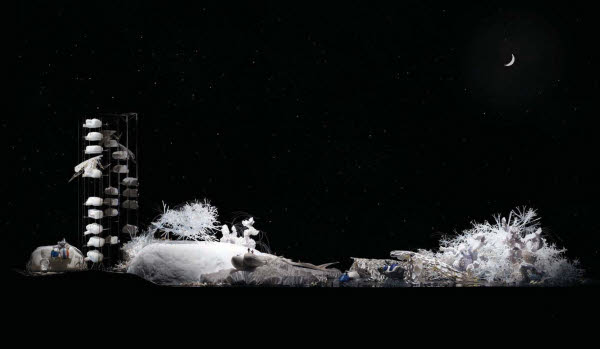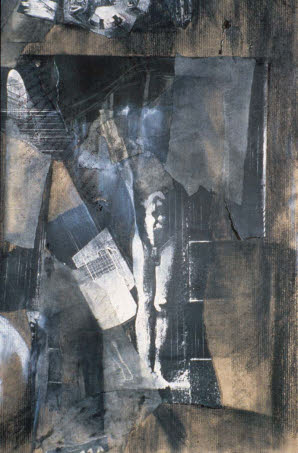Mixed-media drawings use a combination of techniques, mixing hand-drawing and different software according to the design process or the intended nature of the final artifact. Accepting the limitations of standard forms of plotting, projected, and screen-based media, mixed-media drawing offers enormous potential for further developments in architectural visualization.
A hybrid approach to drawing can be particularly useful in the early stages of design. Shifting between hand-drawn and digital techniques can allow a drawing to become a more flexible vehicle for creative thinking, facilitating diverse design approaches in a way that acknowledges drawing as a creative act of discovery, rather than the predictable application of procedures, or illustration; a drawing can reveal something that would otherwise remain undisclosed.
Collages are central to the interpretative drawings that drive design forward. At the same time, they are vital tools for understanding context and inhabited space. Collage in its simplest form is made of paper, either cut or torn, and here we illustrate an example of an early study for an urban cinema space and animator’s studio (opposite). This drawing began to unravel shifts in scale and a play between real and fictive space that was to be experienced in the urban interior. The torn photocopies were pasted onto brown paper overworked with black pastel and chalks, giving the drawing a more immediate character of being worked when compared to a digitally generated image. This material quality of the drawing-as-artifact is traditionally the realm of collage.

Saraben Studio’s itinerant battery-powered coastal terrain, mixed media, L.A.W.u.N Project #21.
The collages illustrated on page 65 are early studies for a project, set in London’s East End, for a shared external space related to places where cloth was traded, worked, and displayed. Taking the context as a whole, design strategies for this marketplace were initiated by making “material collages” using cloth, thread, hemp, jute, and dressmaking patterns. These kinds of drawings were “registers” of a thought process, at a stage where the final proposal was unclear, as much as they were drawings that expressed the material and fragmented spatial conditions of the context.
Other collages, related to later stages of this project, are made entirely of torn tissue paper. These sketches are scanned and developed in Photoshop to show a more controlled structure and areas of light and to articulate spatial proposals. The space and color of these “paper walls” preceded the detail development of the project.
The architects Buschow Henley explore the process of photographic etching using black and white CAD images (see page 108). This kind of process is interesting in the sense that it allows for precise drawings to be reproduced that have an attractive surface quality, either through the paper itself or through the layering of printing inks.

The simplest and most immediate form of mixed-media drawing is collage. Here is a collage done at the early stage of design development, using torn paper and charcoal. Wrapping paper creates a useful mid-tone brown background.
TIP DIGITAL IMAGE SIZE
When working on hand- and digital-drawing techniques, save time by making sure the image size is no bigger than that necessary for the output device settings.
